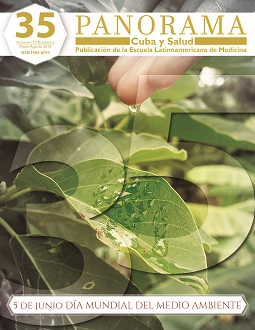Aspectos históricos y sociales de las epilepsias / Historical and social aspects of epilepsies
Abstract
La epilepsia es probablemente la condición neurológica más frecuente en el mundo. La Organización Mundial de la Salud estima que cerca de 65 millones de personas en el mundo son epilépticos, de ellas 50 millones viven en países subdesarrollados. Los epilépticos sufren desde los inicios de la historia de la humanidad de un estigma que provocó, en la antigüedad y el medioevo, prácticas bárbaras y anticientíficas. A pesar de los avances en el conocimiento de la génesis de la enfermedad, persisten en nuestros días una serie de mitos y actitudes que provocan que el paciente epiléptico no sea aceptado plenamente en la sociedad moderna. Entre ellos se encuentran sentimientos de sobreprotección por parte de la familia, rechazo por parte de maestros y compañeros de aula, así como una serie de prácticas discriminatorias en la edad adulta en lo referente a posibilidades de empleo y maternidad, entre otras.
Palabras clave: epilepsia; estigma social; historia.
Epilepsy is probably the most frequent neurological condition in the world. The World Health Organization estimates that about 65 million people in the world are epileptic, of whom 50 million live in underdeveloped countries. The epileptics suffer from the beginnings of the history of the humanity of a stigma that provoked, in the antiquity and the medioevo, barbaric and antiscientific practices. Despite advances in the knowledge of the genesis of the disease, a series of myths and attitudes persist in our days that cause the epileptic patient not to be fully accepted in modern society. Among them are feelings of overprotection on the part of the family, rejection by teachers and classmates, as well as a series of discriminatory practices in adulthood in terms of employment opportunities and maternity, among others.
Keywords: epilepsy; social stigma; history.
References
1. OMS. Epilepsia. Nota descriptiva 999, febrero de 2016.
2. Ropper AH, Samuels MA, Klein JP. Adams and Victor’s Principles of Neurology. 10 ed. New York: McGraw-Hill; 2014.p.318 - 354
3. Sanjeev VT, Nair A. Confronting the stigma of epilepsy. Ann Indian Acad Neurol. 2011 jul-sep; 14(3): 158–163.
4. Berg AT, Scheffer IE. New concepts in classification of the epilepsies: entering the 21st century. Epilepsia. 2011; 52: 1058-62.
5. Maya Entenza, CM. Epilepsia. Editorial Ciencias Médicas, la Habana. 2010.
6. Tuft M, Nakken KO: Epilepsy as stigma – evil, holy or mad? Tidsskr Nor Legeforen nr. 23 –24, 2014; 134: 2328-31
7. Figueroa Duarte AS, Campell Araujo OA. Aspectos psicosociales de la epilepsia. Arch. Neurocien. (Mex., D.F.) 9(3) sep. 2004
8. La Biblia. Centro Mundial de Traducción de la Biblia. 2005.
9. Vancini RL, Barbosa de Lira CA, Vancini-Campanharo CR, Barbosa DA, Arida RM. The Spiritism as therapy in the health care in the epilepsy. Rev. Bras. Enferm. vol. 69 no. 4, Brasilia July/Aug. 2016
10. Fanta T, Azale T, Assefa D, Getachew M. Prevalence and factors associated with perceived stigma among patients with epilepsy in Ethiopia. Psychiatry J. 2015: 627345.
11. Tuft M, Nakken KO. Epilepsy and stigma in popular music. Tidsskr Nor Legeforen nr. 23 – 24, 2014; 134: 2290 – 3
12. Saadi A, Patenaude B, Nirola DK, Deki S, Tshering L, Clark S, et al: Quality of life in epilepsy in Bhutan. Seizure 2016; 39: 44–48
13. Atadzhanov M, Haworth A, Chomba EN, Mbewe EK, Birbeck GL. Epilepsy-Associated Stigma in Zambia: What factors predict greater felt stigma in a highly stigmatized population? Epilepsy Behav. 2010; 19(3): 414–418.
14. Rodríguez García PL. Historia de la Neurología en Cuba. Rev Cub Neurol Neurocir. 2013;3(Supl. 1):S56-S75
15. Segura Massó AA. Estado de la información acerca del paciente epiléptico y su inserción social en Cuba. Rev Cub de Salud Pública. 2014;40(4):324-333
16. Fabelo Roche JR, Rojas Sánchez GA, Iglesias Moré S. Guías de buenas prácticas para la atención psicológica y social al paciente con epilepsia. Revista Cub de Salud Pública. 2015;41(2): 357-368
17. Palacios E, Cárdenas K. Epilepsia y embarazo. Repert. med. cir; 24(4):246-253, 2015.
18. Aguilar S, Alves MJ, Serrano F. Gravidez e epilepsia. Acta Obstet Ginecol Port 2016;10(2):120-129
19. Pimentel J, Tojal R, Morgado J. Epilepsy and physical exercise. Seizure 2015; 25: 87–94
20. Wo MC, Lim KS, Choo WY, Tan CT. Employability in people with epilepsy: A systematic review. Epilepsy Res. 2015 oct;116:67-78.
21. Wo MC, Lim KS, Choo WY, Tan CT. Factors affecting the employability in people with epilepsy. Epilepsy Res. 2016 dec;128:6-11.
22. Vicente-Herrero MT, Torres Alberich JI, Ramírez Iñiguez de la Torre MV, Capdevila García L, Terradillos García MJ, López-González AA, et al. Accidente de trabajo por crisis epiléptica y traumatismo craneoencefálico con resultado de muerte. Una revisión desde la jurisprudencia y legislación en España. Acta Neurol Colomb. 2014; 30(4):337-341
23 Yang R, Wang W, Snape D, Chen G, Zhang L, Wu J, Baker GA, Zheng X, Jacoby A, on behalf of the CREST Study Group. Stigma of People with Epilepsy in China: Views of health professionals, teachers, employers and community leaders. Epilepsy Behav. 2011 Jul; 21(3): 261–266.
24 Aydemir N, Kaya B, Yıldız G, Öztura I, Baklanb B. Determinants of felt stigma in epilepsy. Epilepsy & Behavior 2016; 58: 76–80
25 Iglesias Moré S, Fabelo Roche JR, Rojas Velázquez Y, González Pal S, Ramírez Muñoz A. Calidad de vida en niños y adolescentes con epilepsia. Rev Cub de Enfermería. 2012;28(2):99-111
26 Chávez-Nomberto R, Samalvides F, Guillén-Pinto D. Conocimientos y creencias sobre epilepsia, en padres de familia que acuden a un hospital de tercer nivel. Lima, Perú. Rev Neuropsiquiatr 78 (3), 2015.
27 Fabelo Roche JR, Iglesias Moré S, Louro Bernal I, González Pal S. Afrontamiento familiar a la epilepsia. Rev Cub de Salud Pública 2013; 39(3)
28 Alvarado L, Ivanovic-Zuvic F. Adherencia a tratamiento en la epilepsia: una cuestión por resolver. Rev. méd. Chile 2013;141(8)
29 Noble AJ, Robinson A, Snape D, Marson AG. ‘Epileptic’, ‘epileptic person’ or ‘person with epilepsy’? Bringing quantitative and qualitative evidence on the views of UK patients and carers to the terminology debate. Epilepsy & Behavior 2017; 67:20–27
30 Ridsdalea L, Philpotta SJ, Krooupaa AM, Morgan M. People with epilepsy obtain added value from education in groups: results of a qualitative study. European Journal of Neurology 2017, 24: 609–616
Downloads
Published
How to Cite
Issue
Section
License
La aceptación de un trabajo para su publicación en Panorama. Cuba y Salud supone que Los autores/as conservarán sus derechos de autor y garantizarán a la revista el derecho de primera publicación de su obra, el cual estará simultáneamente sujeto a la Licencia de reconocimiento de Creative Commons que permite a terceros compartir la obra siempre que se indique su autor y su primera publicación esta revista.
Los autores/as podrán adoptar otros acuerdos de licencia no exclusiva de distribución de la versión de la obra publicada, siempre que se indique la publicación inicial en esta revista.
Licencia Creative Commons
La Revista Panorama Cuba y Salud se encuentra bajo una
Licencia Creative Commons Reconocimiento-NoComercial 4.0






